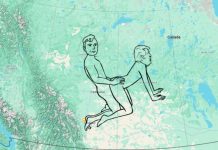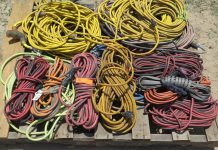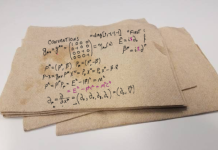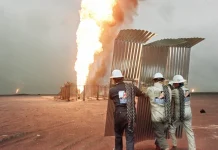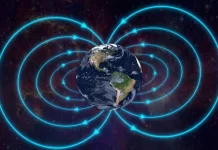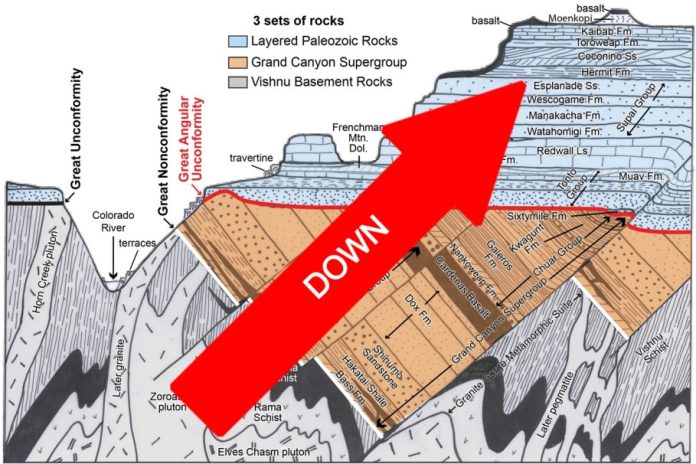
CALGARY, Alberta – In a stunning twist to the field of geology, Dr. Hamilton Flipova, the chief geoscientist at the lesser-known Rock Bottom Institute located in Edmonton, Alberta, has made waves with his groundbreaking theory that the oldest geologic formations actually lie above the younger ones in the stratigraphic chart. His thesis, which he refers to as “Reverse Stratigraphy,” has left his peers confused, skeptical, and mildly amused.

“It’s simple,” Dr. Flipova explained at a recent GeoConvention conference, during which most attendees stared blankly at their coffee cups. “For decades, we’ve been getting it all wrong! The rocks on top are new, and the ones on the bottom? Well, they’re older, but technically newer because time flows in reverse beneath the surface.” He continued, “Look, the rocks are trying to go up, but we’ve all been fooled by this so-called ‘gravity.’ Ever wonder why things fall? It’s because they’re trying to escape! We’ve just been too blinded by Newton and Einstein propaganda.”
Despite publishing a series of technical papers on the subject, including “Rocks Are Lying to Us, and So Is Gravity,” and “How Sediments Time Travel,” Dr. Flipova’s theories have garnered little support. In fact, no one has dared to reference his work, unless it was for a joke at the annual GeoCon karaoke night, where Queen’s classic hit “Under Pressure” took on new meaning.
“Look, we tried in earnest to understand what he was saying,” said Dr. Sarah Quartz, a well-respected geologist and fan of conventional geological thinking. “But his stratigraphic cross-sections look like abstract art. I don’t know whether to study them or hang them in the lobby.”
His revolutionary theory even inspired a heated discussion on social media, with the hashtag #ReverseRocks briefly trending. However, most of the tweets were from geology students hoping to pass their final exams by aligning their worldview with Dr. Flipova’s.
“I used to think mountains were formed by tectonic plates shifting upward,” tweeted one first-year student. “But according to Dr. Flipova, they’re just backwards sinkholes! This theory is nuts. #MindBlown.”
As his fame—or perhaps infamy—spread, Dr. Flipova remained undeterred by the naysayers. “People laughed at Galileo too,” he remarked with a smirk. “And look where we are now! The Earth revolves around the Sun, and soon they’ll see that the top rocks are really just young at heart.”
Dr. Flipova has even developed new geological terminology to support his theory. He now refers to what most geologists call “superposition” as “undersuperposition,” explaining that, “If you flip the rock column, it all makes perfect sense. We’re just looking at the earth upside down, as indicated from the Einstein field equations that I was able to modify to show that gravity indeed points upwards.”
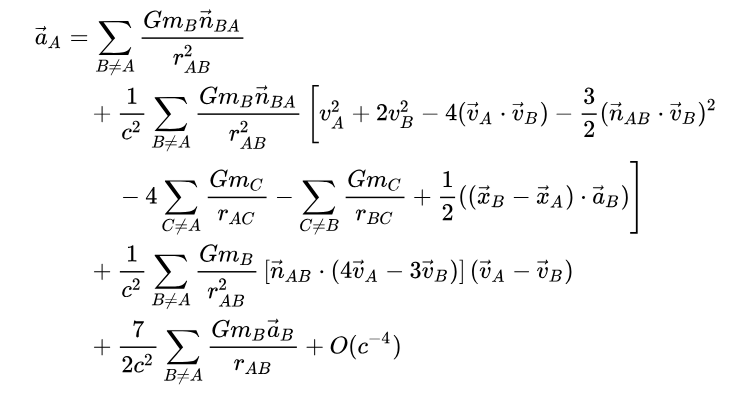
But his critics point to a small, yet crucial detail that may explain everything.
“Dr. Flipova walks on his hands,” whispered a colleague who wished to remain anonymous, glancing around nervously as though Flipova might somehow hear the comment from across the room.
Indeed, Dr. Flipova can be seen moving about the lab, field sites, and lecture halls entirely on his hands. He insists this unique perspective gives him the clarity most geologists lack.
“When you’re upside down all day, you see the world differently,” Dr. Flipova said while balancing on his palms during an interview. “It’s not that the rocks are wrong—it’s that we’re standing the wrong way up. You should try it. Gravity’s just a state of mind, people.”
Dr. Flipova’s most recent paper, “Flipping Geology: How Standing on Your Hands Unlocks Earth’s Secrets,” is due out next month in a journal that has yet to be named, although rumours suggest it will be self-published.
While the scientific community continues to scratch their heads over Dr. Flipova’s theories (and unconventional locomotion), one thing remains certain: upside-down or not, this geologist is walking to the beat of his own stratigraphic drum—on his hands, of course.
